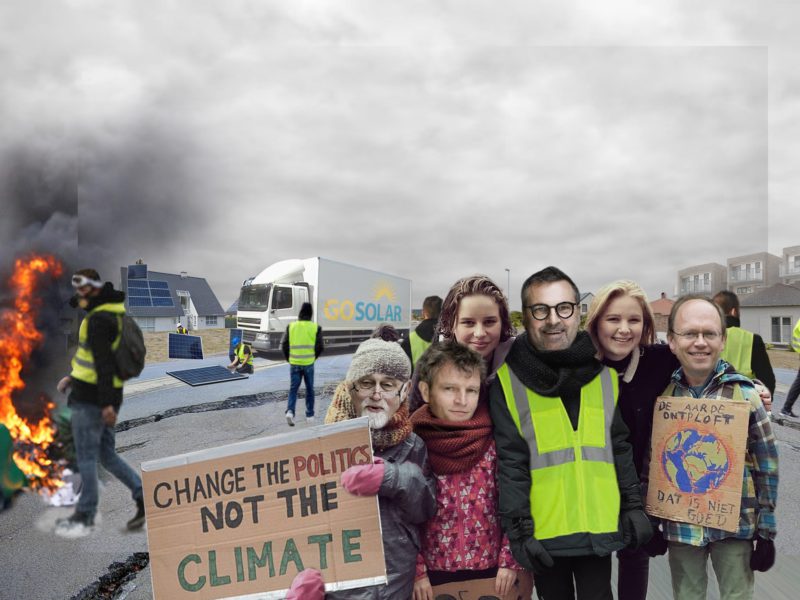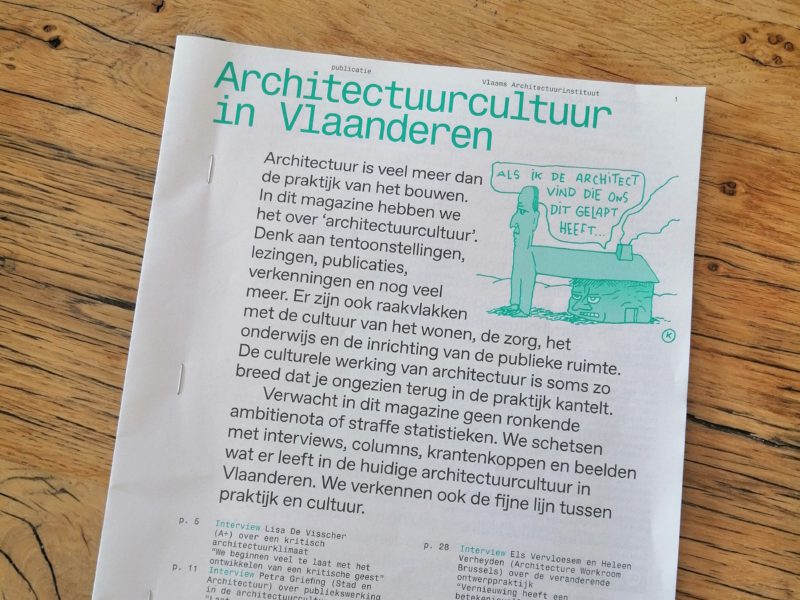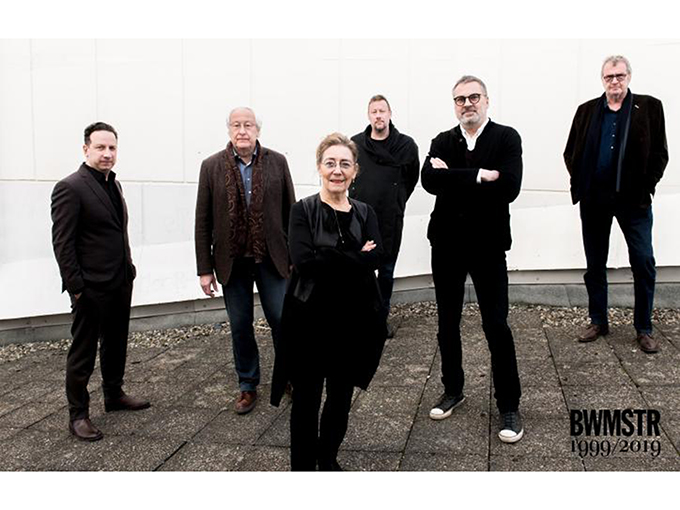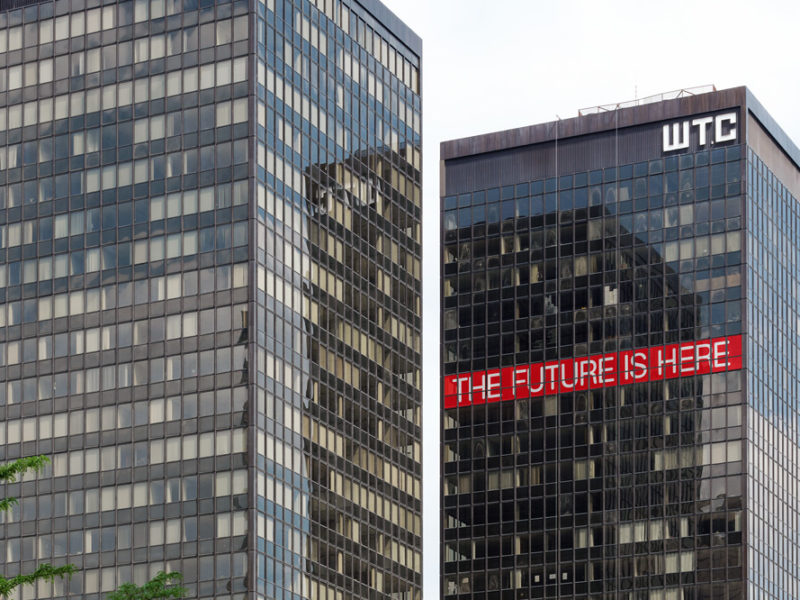Article
Flemish architecture culture for beginners
Gideon Boie
16/05/2022, Archined
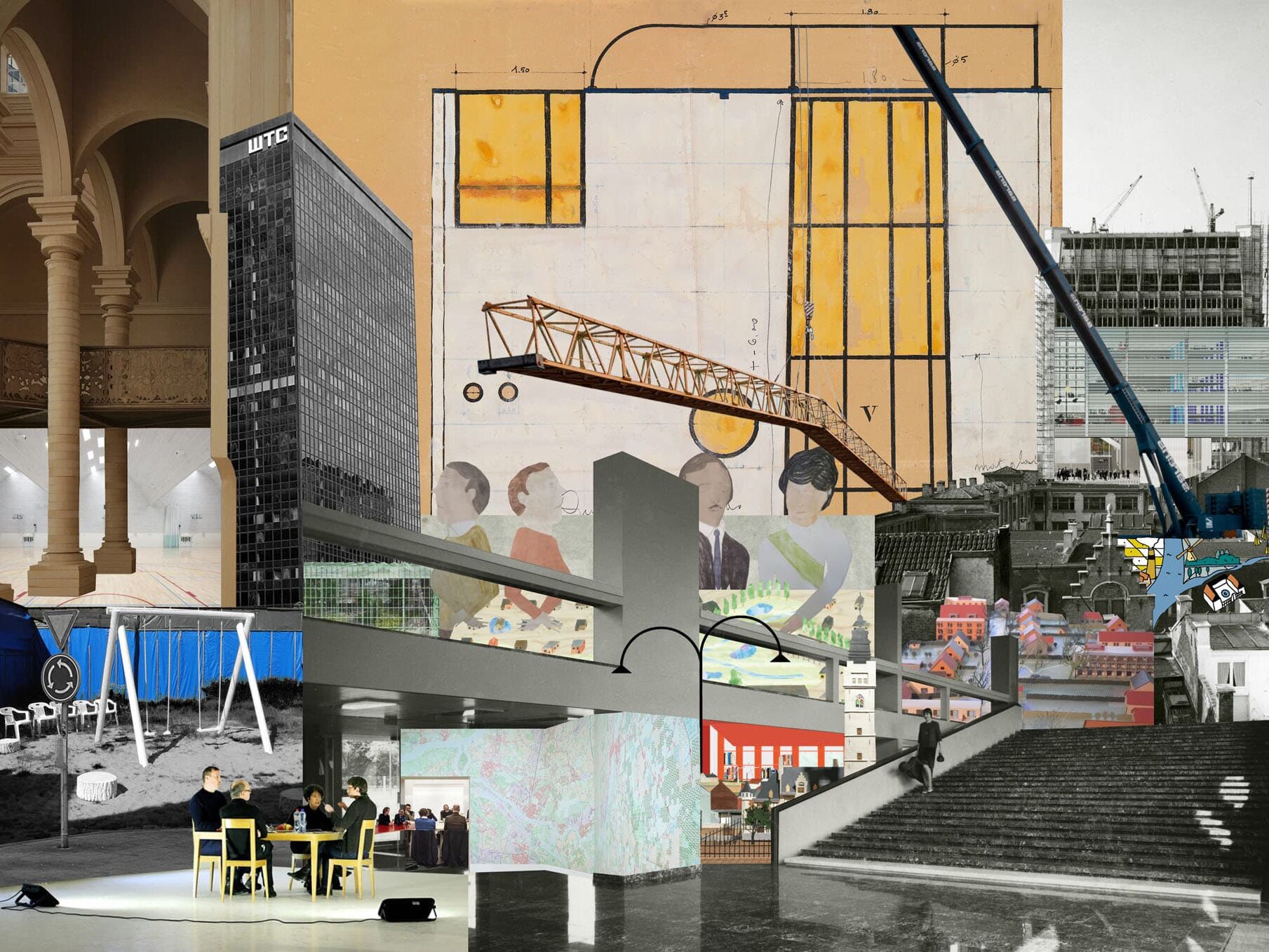
Image: Cinéma Jolia
As part of The Persistence of Questioning, critical reflections for the future: ‘What is the state of architectural culture?’, Gideon Boie explains why since the turn of the millennium, Flanders has invested in a rich institutional architectural culture, one aspect of which is a vibrant climate of design competitions. This was prompted by the depoliticization of the way architecture commissions were secured, but it turns out that old habits die hard.
Flemish architecture enjoys international recognition today, though that was not always the case. There was a time when some volunteers and individuals engaged in a lonely struggle to promote architectural quality in the physical living environment. Making the selection of architects less subject to political machinations was the goal in the battle against dubious real estate operations. That provided the inspiration for establishing the Flemish Architecture Institute and the Flemish Government Architect in the late 1990s. The Netherlands was the model for showcasing examples of good practice and realizing exemplary public projects. Over the years, in light of pressing social issues, architecture culture acquired a much more exploratory character, bolstered by built examples. In this text I outline three determining forms of architecture culture in Flanders.
The creation of a broad architectural civil society
The most important player in the field of architecture culture is the Flemish Architecture Institute (VAi), founded in 2001 by Flemish Minister for Culture Bert Anciaux of the Flemish nationalist party VU-ID. The lower font ‘i’ in the acronym indicates that the VAi is modelled on the example of the Netherlands Architecture Institute (NAi) in Rotterdam, now called Het Nieuwe Instituut. The founding of an architecture institute had been a long time in the making thanks to the concerted efforts of various small-scale initiatives such as Archipel, Stichting Architectuurmuseum, Architectuur als Buur and Stad & Architectuur. Architects Leo Van Broeck and Koen Van Synghel eventually wrote the founding memorandum, some crucial sentences of which ended up in the Flemish coalition agreement after the 1999 elections.[1] It states that the core activity of the VAi lies in creating a lively ‘reference framework’ to improve the ‘general quality of living’ and the ‘physical environment’ in particular.
The architecture culture in Flanders was the result of a civil movement — driven in this case from within the profession — that sought to pull design practice out of its dark shadow. It was a public secret that securing architecture commissions was largely determined by shady relations in the real estate sector and party politics. That is why people spoke of the much-needed ‘depoliticization’ of architecture. First and foremost, the aim was to eradicate the culture of clientelism in selecting architects for public commissions, for which the Flemish Government Architect was set up. In tandem with that, the idea emerged that architecture should also address everyday concerns, far removed from politics. That came to be known as the ‘banality’ of architecture. For example, Geert Bekaert even described Hotel Solvay (1894) by Victor Horta, an art nouveau residence recognized as world heritage by UNESCO, in terms of everyday living and expressly not as a showcase for one of the wealthiest families in Belgium.[2]
The ambition to remove politics from architecture also aims to preserve architecture culture as a breeding ground for a ‘broad architectural civil society’.[3] Very innocent non-political cultural initiatives also act as a counterweight that helps to preserve the ‘architectural civil society’ and thus maintain a depoliticized architecture culture. Core tasks of the institute include the publication of the biennial Architecture Book and the organization of Architecture Day, now renamed Festival of Architecture, as well as the archiving of canonical oeuvres by the Centre for Flemish Architecture Archives (CVAA). It also develops an exhibition programme in collaboration with deSingel arts centre in Antwerp, in whose buildings the VAi is housed. A comparison with the usual suspects within the civil society, such as trade unions and nature organizations, seems somewhat exaggerated because the architectural civil society possesses little political influence or financial clout. But the comparison does hit home when it comes to forming a non-governmental force that advocates for quality in the physical environment.
The ‘architectural civil society’ in Flanders also includes individual architects. Asked about key moments in Flemish architecture culture, Sofie De Caigny, the current director of the VAi, mentions the financial crisis of 2008 in the Netherlands, which not only resulted in spontaneous exchanges – Dutch offices were desperately looking for commissions – but also forced Flemish architects to construct their own discourse.[4] Remarkably, De Caigny also mentions the documentary ‘Ordos 100’ of 2012 by artist Ai Weiwei and the architecture office Herzog & de Meuron, in which a number of Belgian architects feature prominently, and the state reforms in Belgium as two other important moments that intensified architecture culture. The former was an important sign of international recognition, and the latter demonstrated the political will to showcase the good achievements of the Flemish region. That brings us to the tricky balancing act within architecture culture, given its triple aim to act as a political counterweight, to promote offices and to serve as a political showcase.
Cultural logic of good patronage
A second player active within architecture culture is the Flemish Government Architect, a position created in 1998 on the initiative of the Flemish Minister, Wivina Demeester (member of the Christian-Democratic Party CD&V). The aim was to assist public clients in defining the scope of architectural projects and in selecting architects. An Open Call system was introduced as a limited procurement procedure that takes the design sketch as a means of assessing architects according to what was called their ‘process willingness’. The neologism alluded to the alignment of the architect’s qualities with the motivations and ambitions of the client. The project definition goes much further than the classical run-down of technical requirements and was considered more as the key moment in the creative design process. The Open Call places design assignments and construction projects within a broader social context.
Although the Open Call is geared towards genuine construction projects, its knock-on cultural effect has always been very significant, if only because it created a platform for a new generation of architects that is now quite successful. The results of the Open Call did of course circulate as examples of good practice thanks to the efforts of the Flemish Architecture Institute. The adage of bOb Van Reeth, the first Flemish Government Architect, about good patronage, was the one-liner: ‘Better not leave architecture to architects.’[5] That is an acknowledgement of what happens before architecture is created: a good design process is only possible after thorough reflection on the social significance of architecture by the client. Moreover, drawing up a shortlist for participation in a competition is a key aspect of the procedure. It is very telling that publications about Open Calls usually present all selected proposals as equally valid contributions to developing a necessary vision, even if the context is competitive.[6]
The cultural dimension acquired particular impetus under the third Flemish Government Architect, Peter Swinnen, active at the time as a partner at 51N4E, when the Open Call formula was broadened to include Pilot Projects.[7] The ambition was to take predefined spatial programmes and identify more urgent design challenges within the most wide-ranging policy areas. On each occasion, the relevant minister and government agencies helped to elaborate and define the building programmes, such as hospitals, schools, brownfields, agriculture, student housing, collective housing and much more. This phase also created the basis for specific building programmes that were to stimulate innovation. The high ambition eventually provoked strong opposition from right-wing populists who, with the Flemish minister-president Geert Bourgeois, were responsible for the Flemish Government Architect.[8] Peter Swinnen was eventually dismissed after accusations of fraud, which later turned out to be false and unfounded.[9]
Political tensions in Flemish architecture culture reached a climax during the tenure of Leo Van Broeck (2016-2020), who had identified sustainability, biodiversity and global warming as the central themes of architectural quality.[10] Van Broeck’s approach caused resentment, and he never shied away from public debate, constantly hammering home the same points. However, it was his support for ‘climate truants’ that went down particularly badly with the authorities. In January 2019, Flanders was hit by a series of protests by young school-going pupils, organized by Youth for Climate, an initiative launched by Anuna De Wever, Kyra Gantois and others that followed the example set by Greta Thunberg. When a political response was not forthcoming, Leo Van Broeck and Professor Jean-Pascal van Ypersele (vice-chair of the Intergovernmental Panel on Climate Change set up by the UN) took the initiative for a climate panel of academics that would write a report in support of the climate truants in Belgium.
The unprecedented visibility of the Flemish Government Architect in this initiative alarmed many people because it conflicted with the so-called ‘primacy of politics’, which the right-leaning Flemish government championed.[11] In the primetime television programme De Afspraak, philosopher Patrick Loobuyck criticized Leo Van Broeck for undermining that ‘primacy of politics’. This denotes a clear hierarchy in decision-making between the preparatory and considered groundwork by government departments and the final decision taken by the executive. The fear was that the Flemish Government Architect might be confused with the Flemish Minister for the Physical Environment, certainly since the then minister Joke Schauvliege was not exactly visible in climate discussions, to put it mildly. For example, the so-called Mobiscore, a points system to calculate the ecological footprint of a house, a rare initiative by the minister, was quickly swept under the carpet out of fear of criticism. Leo Van Broeck voluntarily stood up for the Mobiscore and, in doing so, shocked plenty of mayors of small provincial towns and villages. However, the resulting commotion ensured that the messy use of space in Flanders and the impact of architecture on the climate were intensively discussed in the press.
Make way for the cultural operator!
In recent years, architecture culture in Flanders has seen the emergence of a new type of player, and the most striking exponent is the Architecture Workroom Brussels, a hybrid between both previous manifestations: the depoliticized architectural civil society and good public patronage. AWB is a think-tank that offers a highly operational interpretation of culture.[12] The idea is to use architecture culture to proactively create a ‘meaningful context’, in which architects can find a place and deploy their skills in practice.[13] An early model project is the programme The Ambition of the Territory: Flanders as Design, which was presented in the Belgian Pavilion at the Venice Architecture Biennale in 2012. It brought together a number of government players to discuss spatial planning in Flanders. The cultural context was used to establish the right atmosphere for assorted discussion partners with various backgrounds, among them cartography (GRAU), models (architects De Vylder Vinck Taillieu) and graphic work (Ante Timmermans). After the Biennale, the Flemish Architecture Institute continued the programme by reconstructing the Belgian pavilion, reduced in scale to 70%, in the exhibition space at deSingel.
Roeland Dudal, founding partner of AWB, described the project The Ambition of the Territory as a failure in terms of an exhibition, but a huge success in terms of spin-off: bringing together actors to discuss spatial issues, defining long-term programmes and building up commitment. AWB organized many other projects along similar lines, among them ParckDesign 2012, Festival Canal Play Ground (2014), The Future is Here (2018) and Take Care! (2019). The Great Transformation (2021) is perhaps the most extensive and ambitious of them. It is presented as an ‘independent learning environment, incubator and public programme’ that brings together ‘enterprising citizens, governments, companies, impact investors, academics and organizations’ to connect major challenges to ambitious plans and many strategic projects that would be realized on numerous sites between now and 2030.[14] The website of The Great Transformation makes the algorithm clear: harvest and gather, force a breakthrough, speed up the design process, learn by doing, and then replicate. Time and again the cultural operator succeeds in acquiring a key seat at the design table where it can define the urgencies of our time, translate them into burning design questions, find funding to figure out solutions, define concrete actions, invite thinkers and doers, set deadlines for achieving goals, and so on.[15]
Logically, using such a cultural space opens up more room for manoeuvre compared to working with the Government Architect, yet the influence and leeway within the culture is seriously limited, because all works are dependent on public and private partnerships. It is difficult to remain neutral while a site is being prepared for urban development and real estate projects demand considerable capital investment. In the case of the Festival Canal Play Ground, the interventions cannot be separated from the sky-high real estate interests in the Canal Zone, partly incorporated in the Canal Plan laid down by the Brussels government. We are speaking here about the park and residential expansion on the old shunting yard Thurn & Taxis (including Gare Maritime designed by Neutelings Riedijk) and the residential tower UP-site. One intervention was the temporary BRIDGE (2014) by Gijs Van Vaerenbergh, in which a hoisting crane was placed horizontally to connect the two sides of the canal. Nobody doubts the good intentions of the artistic, temporary bridge – after all, the canal is largely a social fault line in Brussels – and yet it should also be seen as the innocent prelude to future developments by public and private companies who did actually use the Canal Zone as their playground.[16] The administrative straitjacket – remember the ‘primacy of politics’ – seems to have been replaced by numerous new boundaries in the area of public relations and market mechanisms, such as coalition building, placemaking, gentrification, and so on.
Finally
Architecture culture in Flanders has been standing on its own two legs for two decades and is visible today in public debates, but that successful presence now forms the big challenge. In a review of the Flemish Architecture Yearbook 2008 (published by VAi), Christophe Van Gerrewey reversed the words of Geert Bekaert: the challenge lay not so much in the absence of an architecture culture – as Bekaert suggested in 1987 – but in its very presence.[17] The Flemish Architecture Institute has consistently showcased examples of good practice, which has made architecture culture always seem a bit like a culture of celebration.
Together with thinking in terms of examples of good practice, a number of exemplary architecture practices have emerged and now feature prominently on the international stage, yet their work is easily reduced to a benchmark that renders the functioning of Government Architects and Architecture Institutes redundant. In the same way, the success of the Flemish Government Architect seemed to cause some erosion. Leo Van Broeck certainly did not encounter opposition just from politicians but also from previous Government Architects and fellow architects who were all concerned about the continued existence of the Open Call.
It was notable that, precisely at a time when the importance of architectural quality for the physical environment in Flanders was making headlines, architects remained silent. And what about the development of an architecture culture through an operator, like AWB, that looks for opportune transitions? Architecture culture undoubtedly enjoys great relevance and visibility once it enters into strategic alliances with societal actors. The key question, however, is whether this cultural operator is strong enough to hold its own amid the political and economic interests at play in city development, and thus do justice to the years of battle waged by the pioneers from within the architectural civil society.
Footnotes
[1] Debate on Architecture & Activism with Leo Van Broeck, Faculty of Architecture KU Leuven, Brussels, 28/02/2020. See the coalition agreement of the Flemish government ‘en nieuw project voor Vlaanderen’ (1999): https://www.mobielvlaanderen.be/pdf/beleidsnota-brieven/vlaamsregeerakkoord1999-2004.pdf.
[2] Geert Bekaert, Belgische architectuur als gemeenplaats. De afwezigheid van een architectonische cultuur als uitdaging, in: Archis, 9, 1987.
[3] Saving the architectural civil society was an argument in the defence of the Flemish Government Architect after the resignation of Peter Swinnen. See: Gideon Boie, De Bouwmeester en de onheilsprofeten, De Standaard, 21/08/2014. The same argument was used by Sofie De Caigny during the opening lectures of the exhibition ‘Coming of Age. Architecture competitions in Flanders and Brussels’ at deSingel in Antwerp, 26/11/2021. See also the essay by Sofie De Caigny published in: Maarten Liefooghe and Maarten Van Den Driessche, More than competition, Flemish Architecture Institute/Team Vlaams Bouwmeester, Antwerp/Brussels, 2021.
[4] See the interview with Sofie De Caigny by Paoletta Holst published in: Gideon Boie and Sofie De Caigny (eds.) Architectuurcultuur in Vlaanderen, Flemish Architecture Institute, Antwerp, 2019.
[5] Marc Santens and Jan De Zutter, Het Vlaams Bouwmeesterschap 1999-2005, Uitgeverij Houtekiet, Antwerp 2008.
[6] Peter Swinnen, Open Call: a public principal’s companion, Team Vlaams Bouwmeester, Brussels, 2015. See also the recurring articles by the Flemish government architect in the magazine A+ Architecture in Belgium.
[7] Peter Swinnen, Zeven memo’s voor een verlichte bouwcultuur. Ambitienota Vlaams Bouwmeester 2010-2015, published by the Flemish Government, Brussels, 2010.
[8] Peter Swinnen published an opinion article ‘Suburbia aan de Schelde’ in the daily newspaper De Standaard (11/01/2014) in which he strongly criticised the low ambition of Liesbeth Homans, Flemish Minister of Housing and Urban policy.
[9] Walter Pauli and Ewald Pironet, Former Flemish master builder Peter Swinnen: ‘Hoeveel visuele rommel kan een mens aan?’, Knack, 13/06/2018.
[10] Leo Van Broeck, Ruimte maken voor mens en natuur: meerjarenprogramma 2017-2020, published by the Flemish Government, Brussels, 2010.
[11] Philosopher Patrick Loobuyck criticised Leo Van Broeck for breaking into the ‘primacy of politics’ in the prime time television programme De Afspraak, VRT 31/01/2019. See: Gideon Boie, The Bouwmeester Conspiracy, A+ 277 (April/May 2019).
[12] Lecture by Roeland Dudal (co-founder AWB) in the framework of the Elective course Architecture & Activism at the Faculty of Architecture KU Leuven, 15/04/2016. See also the mission statement at the website of AWB: https://www.architectureworkroom.eu/en/about
[13] Sofa-talk with Joachim Declerck (co-founder AWB) in the framework of the Architecture & Activism Elective course at the Faculty of Architecture KU Leuven. See text: Gideon Boie, The future is (not) here, published in: Gideon Boie a.o. (eds.) WTC Tower Teachings, KU Leuven Faculty of Architecture, Brussels, 2019. See also the interview with Els Vervloesem and Heleen Verheyden (AWB) by Paoletta Holst published in Gideon Boie and Sofie De Caigny (eds.) Architectuurcultuur in Vlaanderen, Flemish Architecture Institute, Antwerp, 2019.
[14] https://degroteverbouwing.eu/
[15] Lisa De Visscher (ed.) Practices of Change, A+ 287, issue in jointly edited by Roeland Dudal.
[16] https://www.architectureworkroom.eu/nl/projects/166/bridge
[17] In a review of the Flanders Architecture Yearbook 2008 (VAi publication) Christophe Van Gerrewey turned Geert Bekaert’s words upside down: the challenge was not in the absence of architectural culture – as Bekaert suggested in 1987 – but in its presence. See: Christophe Van Gerrewey, Jaarboek Architectuur Vlaanderen 2006-2007 (edition 2008), De Witte Raaf: Ondertussen, 23(135), 2008, p.13-15.
—
Article written in the publication series ‘The Persistence of Questioning: Critical reflections for the future, about architecture and more’ set up by ArchiNed. Published online 16/05/2022, also available in printed format.
Image ‘The Landscape of architecture culture in Flanders’ (2022) by Cinéma Jolia (Giulia Lazzara and Jolien De Nijs)
—
Tags: English, Vlaams Bouwmeester
Categories: Architecture
Type: Article
